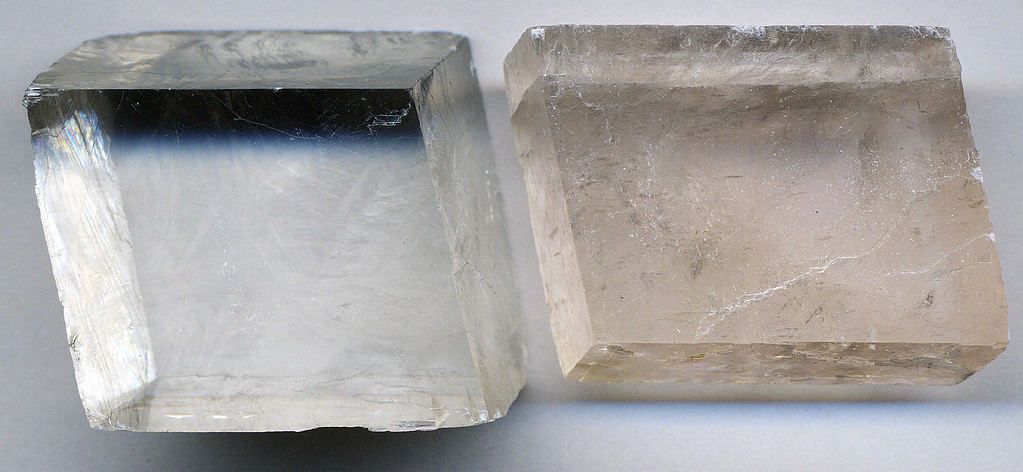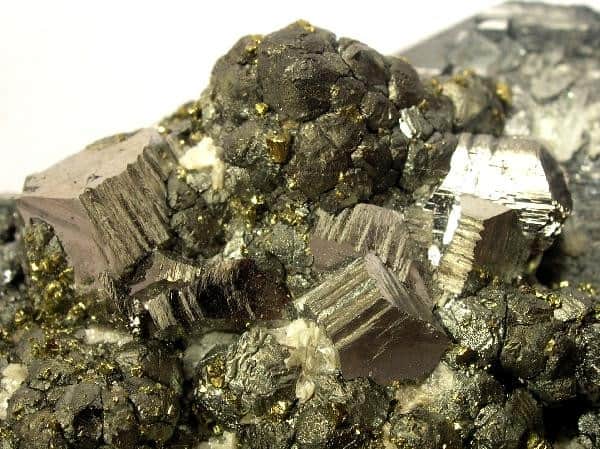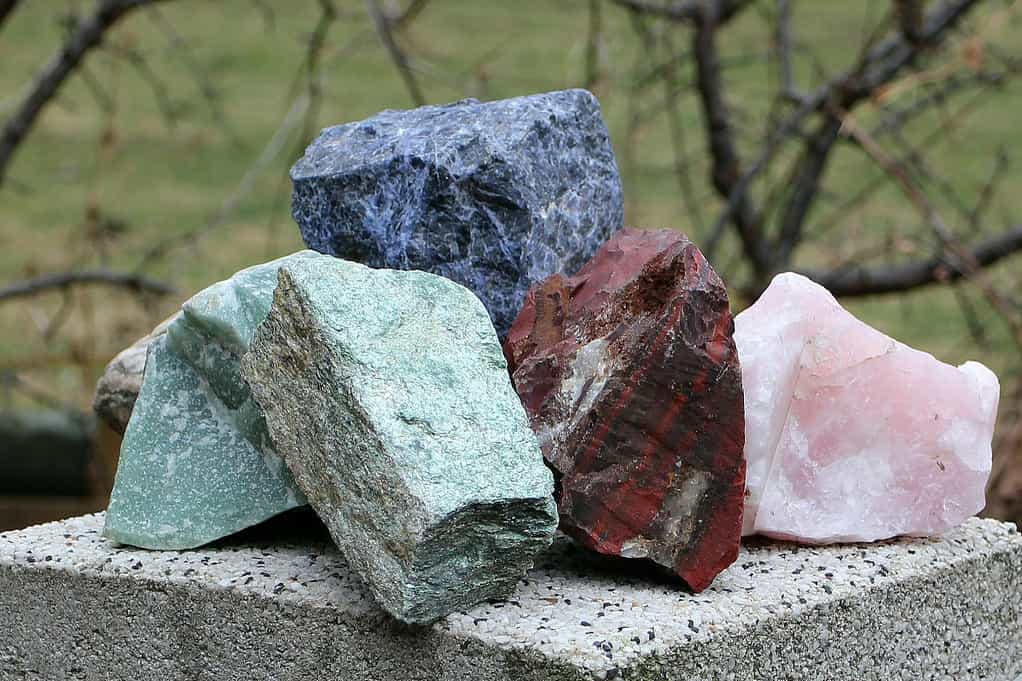Minerals are naturally occurring, inorganic solids that have a defined chemical composition and a crystalline structure. Minerals have physical properties such as hardness, color, luster, and cleavage, which help in their identification. Let’s have a look at these properties.
Physical Properties of Minerals

Crystal Structure
At the heart of any mineral’s identity is its crystal structure, resulting from the orderly geometric spatial arrangement of atoms.
The crystalline structure of a mineral refers to the orderly, repeating pattern of atoms or molecules within the mineral. This structure is what gives each mineral its specific shape and characteristics. The chemical composition of minerals can range from simple elements and salts to more complex silicates and oxides, making the variety of minerals on Earth vast and diverse.
This structure dictates the mineral’s external geometric form. Examples include the characteristic shapes of crystals such as the elongated orthorhombic structure of topaz or the hexagonal columns of quartz. Minerals are restricted to 32 point groups based on their symmetry, further classified into six crystal families: Isometric, Tetragonal, Orthorhombic, Hexagonal, Monoclinic, and Triclinic, each defined by the geometry of the crystal lattice.
If you want to truly understand the properties of minerals — and their physical properties especially — it’s at this geometry that you need to look. From this microscopic arrangement come the macroscopic properties.
Hardness

The Mohs scale of mineral hardness is a tool used to measure a mineral’s resistance to scratching, ranging from Talc at 1, the softest, to Diamond at 10, the hardest. This property reflects the bond strength within the mineral’s structure, which can vary across different directions in anisotropic minerals like kyanite.
The Mohs scale is a relative scale, not a proportional one. This means the difference in hardness between minerals is not evenly spaced. For example, diamond (10) is much harder than corundum (9), more so than the difference in hardness between calcite (3) and gypsum (2).
Here’s a brief overview of the Mohs hardness scale:
- Talc (Mohs hardness: 1) – The softest mineral, easily scratched by a fingernail.
- Gypsum (Mohs hardness: 2) – Can be scratched by a fingernail with more effort than talc.
- Calcite (Mohs hardness: 3) – Can be scratched by a copper coin.
- Fluorite (Mohs hardness: 4) – Can be scratched with a knife or steel nail.
- Apatite (Mohs hardness: 5) – Can be scratched with a knife with more difficulty, and it can scratch glass.
- Orthoclase Feldspar (Mohs hardness: 6) – Can scratch glass and can be scratched by a steel file.
- Quartz (Mohs hardness: 7) – Can scratch glass and steel and is able to scratch items of lower hardness.
- Topaz (Mohs hardness: 8) – Can scratch quartz and lower hardness minerals.
- Corundum (Mohs hardness: 9) – Second hardest mineral, can scratch all other minerals except diamond.
- Diamond (Mohs hardness: 10) – The hardest known mineral, can scratch all other substances.
Lustre and Diaphaneity
Lustre describes how light interacts with a mineral’s surface, ranging from metallic (like in pyrite), to non-metallic varieties such as vitreous or pearly. Diaphaneity, on the other hand, refers to the mineral’s transparency or lack thereof. Minerals can be transparent, translucent, or opaque depending on their composition and the structure of their crystals.

- Metallic Luster: Minerals with a metallic luster look shiny and reflective like metal. Examples include pyrite and gold. These minerals are usually opaque and reflect almost all the light that hits their surface, giving them a bright, shiny appearance.
- Non-Metallic Luster: This category encompasses a wide range of luster types that do not look like metal. Non-metallic luster is further divided into several types, including:
- Vitreous (Glassy): The most common type of luster, it looks like broken glass. Quartz is a good example of a mineral with a vitreous luster.
- Dull/Earthy: Lacks shine and appears rough or like dirt. An example would be kaolinite.
- Pearly: Resembles the inside of a pearl. Minerals with this luster have a soft shine and are often translucent. Talc can have a pearly luster.
- Silky: Appears smooth and silky, often found in fibrous minerals such as asbestos.
- Greasy: Looks as if it is covered by a thin layer of oil.
- Resinous: Resembles the luster of resin, with a slightly transparent and plastic-like sheen, as seen in sphalerite.
- Adamantine: Very high, almost diamond-like sparkle. Minerals with adamantine luster are highly reflective and can include gems such as diamonds.
Colour and Streak
Minerals come in virtually any type of color. However, color can be misleading.

While color is the most obvious property, it is often not diagnostic due to variations caused by impurities. Streak testing, which examines the color of a mineral’s powdered form, provides a more consistent identification method. This property is particularly useful for distinguishing minerals with metallic lustres and those that are harder than the streak plate.
Cleavage, Fracture, and Tenacity
Cleavage describes a mineral’s tendency to break along specific planes of weakness, a property that varies greatly among minerals and is influenced by their crystal structure. Fracture, in contrast, refers to the irregular breakage of a mineral when cleavage is not present. Tenacity measures the mineral’s resistance to breaking, bending, or deforming.
Specific Gravity
Specific gravity is a measure of the density of a mineral relative to water. This property is significant in identifying minerals with unusually high or low densities, providing insights into their chemical composition. Minerals with metallic lustres, such as galena, tend to have higher specific gravities due to the presence of heavier elements.
Additional Diagnostic Properties
Beyond the core physical properties, minerals may exhibit unique characteristics such as fluorescence, magnetism, radioactivity, and reactivity to acids. These properties can offer additional clues for identification, particularly when common properties overlap among different minerals.
Some minerals also react with specific substances, as is the notable case of limestone, which reacts to hydrochloric acid (and this is sometimes used as an identification technique).
Understanding Mineral Properties: A Tool for Identification
The identification of minerals through their physical properties is a fundamental skill in geology and related fields — but it’s not an easy one to master. Sometimes, some minerals have distinctive properties that allow an almost immediate identification; however, in most cases, a holistic assessment is required, and this can be very challenging.
If geologists really want to know what’s inside a mineral, they can resort to more advanced techniques. For instance, through X-ray diffraction, researchers can assess the crystalline structure of minerals. By measuring how the way X-rays diffract, or scatter, off the atoms in a crystal, geologists can obtain a unique “fingerprint” for the mineral. This method is precise in identifying minerals because every mineral has a characteristic pattern of diffraction. Various types of microscopy or spectroscopy are also used.
Whether through simple observation of crystal habit and hardness or through more complex analysis involving specific gravity and chemical reactivity, the study of mineral properties is a window into the Earth’s geological history and processes. Our society wouldn’t exist as we know it without minerals, and our progress as a society also depends on our improved understanding of minerals.






